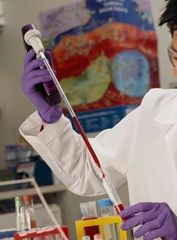Nine Gaps in Our Understanding of RA: Openings to Yet Better Outcomes
The past decade has seen remarkable advances in our understanding of rheumatoid arthritis. However, challenges remain. Resolving them offers hope for even greater success in the future.
These are most exciting times for rheumatologists. The past decade has seen remarkable advances in our understanding of the pathogenesis of rheumatoid arthritis (RA), and the advent of several novel treatments. However, these challenges remain. The prospect of resolving them offers hope for even greater success in the future.
• Progress in understanding RA over the last decade has been remarkable, but considerable clinical need is still unmet. This is manifest most obviously in the desire to achieve remission for a majority of patients – even drug-free remission. At present, we can achieve this only rarely.
• In general, at present we make therapeutic choices (the agents we choose and the order in which we select them) only empirically. We require biomarkers (molecular and imaging, in combination or separately) that allow us to refine diagnosis, prognosis, and therapeutic decisions. 2-4

• Our understanding of pathogenesis1 has helped to identify new drug targets, but it could achieve more. We could also use new knowledge about pathogenesis to guide clinical decision-making. Evidence to support his hypothesis is lacking, but should be sought.
• A pre-RA syndrome is now recognizable, but we are not yet taking adequate advantage of the knowledge. Serum expression of autoantibodies that recognize citrullinated epitopes on self-proteins, cytokines /chemokines, and altered metabolic features develop during this phase, and rise as the clinical onset of detectable synovitis approaches. Criteria that clearly identify this pre-RA phase could offer preventative strategies for the future.1
• Genome-wide studies in RA clearly identify a number of loci that implicate immune functions at the core of disease risk and development. Recently epigenetic alterations have also emerged that can modulate such risk. In time, genetic testing may allow us to target individuals at risk of future RA who could be monitored for changes in markers of an incipient pre-RA condition.1
• Better understanding of how environmental triggers operate upon a high-risk genetic background should offer further avenues for prevention. These include smoking, obesity, silica, vitamin D deficiency, and a curious protective effect of modest alcohol intake. How these factors promote the onset or progression of the disease is still unknown. Intriguing early data suggest that immune dysregulation in the pulmonary mucosa may be one route to an early breach of tolerance, but why and how this involves the joints is not yet known either. 1,6
• Future therapies might also address an emerging role of microbes in the development of RA. Tantalizing data from model studies and early human analyses suggest that the microbiome (oral, pulmonary or gastrointestinal) may be another influence that predisposes to the development of RA.5 Whether the effect is direct or acts through an influence on the development of the immune system is not yet known.
• Comorbidities in RA will assume increasing importance, and will demand that we move closer to a holistic therapeutic paradigm. Recognizing and managing vascular, metabolic, bone, and psychological components of the disease are crucial to optimize outcomes. Understanding mechanisms of comorbidities and devising strategies to reduce them should be a priority.
• MicroRNAs are offering new insights into synovitis. Recent studies focused on the mechanisms of chronicity in synovitis suggest that species of microRNA can regulate the activation and perpetuation of some lineages of synovial cells, including macrophages and fibroblasts. MicroRNAs may in turn offer insight into tractable pathways, novel biomarkers, or even in due course could provide therapeutic targeting opportunities (although the latter is a contentious proposal at this stage).7To capitalize upon these leads toward a better understanding of the pathology of RA requires combining a number of approaches: mathematical biology, cell and animal modeling, and clinical trial protocols that are both holistic and adaptive, designed to identify patient selection strategies that optimize efficacy and reduce potential toxicity.
References:
REFERENCES
1. McInnes IB and Schett G.
The pathogenesis of rheumatoid arthritis.
N Eng J Med
(2011) 365:2205â2219
2. Finckh A, Liang MH, van Herckenrode CM
et al.
Long-term impact of early treatment on radiographic progression in rheumatoid arthritis: A meta-analysis
Arthritis Rheum.
(2006) 55:864-872
3. van der Heijde D.
Long-term effects of early treatment in patients with rheumatoid arthritis.
Nature Clin Pract Rheumatol.
(2007) 3:258-259.
4. Smolen JS, Aletaha D, Bijlsma JW
et al.
Treating rheumatoid arthritis to target: recommendations of an international task force
Ann Rheum Dis.
(2010) 69:631â637
5. Scher JU and Abramson SB.
The microbiome and rheumatoid arthritis
Nat Rev Rheum
(2011)7:569-578
6. Kallberg H, Ding B, Padyukov L
et al.
Smoking is a major preventable risk factor for rheumatoid arthritis: estimations of risks after various exposures to cigarette smoke
Ann Rheum Dis.
(2011) 70:508-511
7. Kurowska-Stolarska M, Alivernini S, Ballantine LE
et al
.
MicroRNA-155 as a proinflammatory regulator in clinical and experimental arthritis
Proc Natl Acad Sci
(2011) 108: 11193â11198